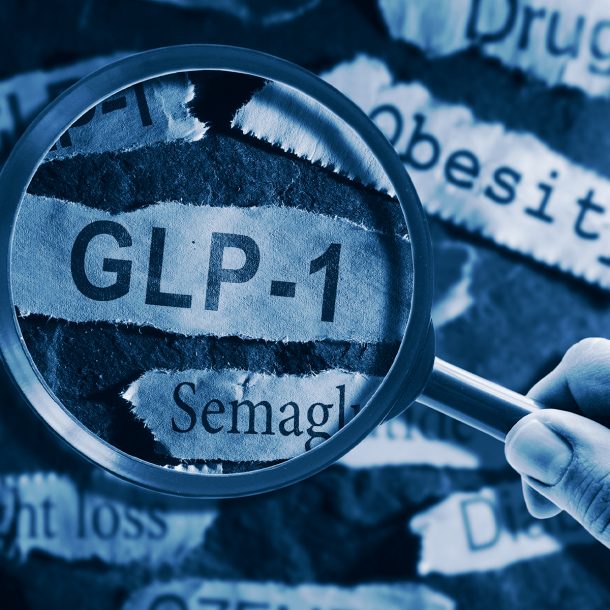-
Property & Casualty
Property & Casualty Overview

Property & Casualty
We offer a full range of reinsurance products and the expertise of our talented reinsurance team.
Trending Topics
Publication
Engineered Stone – A Real Emergence of Silicosis
Publication
Use of Artificial Intelligence in Fire Protection and Property Insurance – Opportunities and Challenges
Publication
Generative Artificial Intelligence and Its Implications for Weather and Climate Risk Management in Insurance
Publication
Public Administrations’ Liability – Jurisprudential Evolution, Insurance Implications, and a Comparative Analysis Across Countries
Publication
Risk Management Review 2025
Publication
Who’s Really Behind That Lawsuit? – Claims Handling Challenges From Third-Party Litigation Funding -
Life & Health
Life & Health Overview

Life & Health
We offer a full range of reinsurance products and the expertise of our talented reinsurance team.
Training & Education
Publication
AI Agent Potential – How Orchestration and Contextual Foundations Can Reshape (Re)Insurance Workflows
Publication
Diabetes and Critical Illness Insurance – Bridging the Protection Gap
Publication
Group Medical EOI Underwriting – Snapshot of U.S. Benchmark Survey
Publication
Why HIV Progress Matters
Publication
Dying Gracefully – Legal, Ethical, and Insurance Perspectives on Medical Assistance in Dying Moving The Dial On Mental Health
Moving The Dial On Mental Health -
Knowledge Center
Knowledge Center Overview

Knowledge Center
Our global experts share their insights on insurance industry topics.
Trending Topics -
About Us
About Us OverviewCorporate Information

Meet Gen Re
Gen Re delivers reinsurance solutions to the Life & Health and Property & Casualty insurance industries.
- Careers Careers
GLP-1 Receptor Agonists – From Evolution to Revolution

September 09, 2025
Dr. Jonah Fox
Region: North America
English
Obesity affects more than 40% of the U.S. adult population1 and represents one of the most significant challenges within our healthcare system today. Overweight and obesity increase the risk of type 2 diabetes, heart disease, hypertension, and dyslipidemia, and are significant drivers of both morbidity and mortality.
Glucagon-like peptide‑1 (GLP‑1) receptor agonists represent a powerful treatment option to aid in managing these complex conditions. The list of FDA-approved indications for this class of medication has grown as of late (and currently includes type 2 diabetes, obesity, cardiovascular event risk reduction, obstructive sleep apnea, chronic kidney disease, and metabolic dysfunction-associated steatotic liver disease), and areas of interest for potential future indications are just as long and far‑reaching.
While obesity represents a profound public health issue to be sure, life and health insurers can create value for their clients and themselves by designing and implementing solutions to aid in preventing and slowing the progression of overweight, obesity, and associated chronic conditions. Behavioral modification represents the starting point for obesity prevention and management; however, losing weight (and maintaining weight loss) through diet and exercise alone is challenging. Importantly, GLP‑1 receptor agonists offer the potential to serve as a glidepath for individuals who have struggled to get started with behavioral modification due to preexisting overweight or obesity.
GLP‑1 Receptor Agonist Development Timeline
In 2005, Byetta (exenatide) became the first GLP‑1 receptor agonist approved for diabetes. While numerous other GLP‑1 receptor agonists have since been developed for the management of diabetes, it wasn’t until 2014 that a GLP‑1 receptor agonist, Saxenda (liraglutide), was approved for obesity (liraglutide had previously been approved for diabetes under the name Victoza). Similarly, semaglutide was originally approved for diabetes under the brand name Ozempic in 2017, and then later approved for obesity (under the name Wegovy) in 2021.
The table below depicts the timing of when many GLP‑1 receptor agonists became commercially available.
|
Brand Name |
Generic Name |
Sponsor / Manufacturer |
Indication |
Launch Date |
|---|---|---|---|---|
|
Byetta |
exenatide |
AstraZeneca |
Diabetes |
4/28/05 |
|
Victoza |
liraglutide |
Novo Nordisk |
Diabetes |
1/25/10 |
|
Trulicity |
dulaglutide |
Eli Lilly |
Diabetes |
9/18/24 |
|
Saxenda |
liraglutide |
Novo Nordisk |
Weight Loss |
12/23/14 |
|
Bydureon Bcise |
exenatide |
AstraZeneca |
Diabetes |
10/20/17 |
|
Ozempic |
semaglutide |
Novo Nordisk |
Diabetes |
12/15/17 |
|
Rybelsus |
semaglutide |
Novo Nordisk |
Diabetes (oral formulation) |
1/16/20 |
|
Wegovy |
semaglutide |
Novo Nordisk |
Weight Loss |
6/4/21 |
|
Mounjaro |
tirzepatide |
Eli Lilly |
Diabetes |
5/13/22 |
|
Zepbound |
tirzepatide |
Eli Lilly |
Weight Loss |
11/8/23 |
Mechanism of Action
GLP‑1 and glucose-dependent insulinotropic polypeptide (GIP, which is combined with GLP‑1 in dual GLP‑1/GIP receptor agonists such as tirzepatide) are hormones that increase insulin secretion. For those with type 2 diabetes, this can delay gastric emptying (which typically leads to an increased feeling of fullness and reduces food intake) and decrease glucagon production (leading to reduced glucose production) when blood sugar levels are elevated.
In addition to aiding with improved glycemic control and weight loss, GLP‑1 receptor agonists can also lead to lower blood pressure and cholesterol levels.2
Current FDA-Approved Indications

Type 2 Diabetes
The physiologic response of the release of insulin after eating a meal may be diminished in type 2 diabetics. With insulin resistance, greater amounts of insulin are needed to maintain normal blood sugar levels. When the body can no longer adequately keep up, blood glucose may rise to diabetic levels. GLP‑1 receptor agonists can assist with this through increasing insulin secretion and decreasing glucagon production, leading to improved overall glycemic control. GLP‑1 receptor agonists have been shown to reduce hemoglobin A1c (a roughly three-month sugar average) by approximately 1% compared to control groups in patients with type 2 diabetes.3
While other diabetic treatment options exist, including low carbohydrate diets, physical activity, and other medication options, GLP‑1 receptor agonists can serve as a powerful tool for diabetic management in individuals who have been unable to achieve desired glycemic control using such options.

Obesity
As described above, overweight and obesity are far too prevalent, with roughly 75% of U.S. adults being overweight,4 and 40% of U.S. adults being obese.5 They are associated with numerous chronic diseases and represent significant contributors to both morbidity and mortality. Prior to the arrival of GLP‑1 receptor agonists, weight loss medications had modest impacts on weight loss and were frequently poorly tolerated. GLP‑1 receptor agonists (e.g., semaglutide) and dual GLP‑1 receptor agonists/GIP agonists (e.g., tirzepatide) have been shown to significantly reduce weight in patients with obesity, with and without type 2 diabetes.6
The mean change in weight at week 72 was shown to be ‑20.2% with terzepatide and ‑13.7% with semaglutide.7

Cardiovascular Event Risk Reduction
In patients with existing cardiovascular (CV) disease and either overweight or obesity, GLP‑1 receptor agonists have been approved by the U.S. Food and Drug Administration (FDA) for reducing the risk of CV events. The SELECT trial, which included patients with CV disease and overweight or obesity (many also had increased risk for diabetes), showed a reduction in major adverse CV events (defined as CV death, nonfatal heart attack, and nonfatal stroke) of 20% with weekly subcutaneous semaglutide 2.4 mg.8
This study, which took place over a five-year period, surely contributed to the FDA’s approval of semaglutide in early 2024 for use in this population, and demonstrated that, in addition to managing diabetes and obesity, GLP‑1 receptor agonists offer value in reducing cardiovascular event risk.

Obstructive Sleep Apnea
Approximately one billion people are estimated to have obstructive sleep apnea (OSA) across the globe,9 making it the most common respiratory-related sleep disorder. Obstructive sleep apnea is directly linked to daytime somnolence, cognitive impairment, and decreased quality of life, and has been associated with broader health conditions, including high blood pressure, heart attacks, heart failure, and diabetes. Studies have also found that adults with sleep apnea have a relatively high prevalence of depressive symptoms, and that the severity of sleep apnea positively corelated with the depressive symptoms.10 Additionally, sleep apnea increases daytime sleepiness, irritability, and fatigue, which may lead to falling asleep during the day, difficulty concentrating, and an increased risk for auto accidents.
A study in The New England Journal of Medicine showed that tirzepatide (a dual GLP‑1/GIP receptor agonist) significantly reduced symptoms of OSA and weight in people with moderate to severe OSA and obesity.11 While a number of different non-medication options exist for treatment of OSA, including lifestyle modifications, breathing devices, oral appliances, and surgical procedures, tirzepatide was approved by the FDA for moderate to severe obstructive sleep apnea in late 2024.

Chronic Kidney Disease
Chronic kidney disease, frequently brought on by longstanding diabetes, can advance to major kidney events, such as end stage renal disease, the need for dialysis, and transplantation – each of which can have significant impacts on health and mortality. Given the relationship between diabetes and chronic kidney disease, it should come as no surprise that GLP‑1 receptor agonists can positively impact the clinical trajectory of those with kidney disease.
The GLP‑1 receptor agonist semaglutide was approved by the FDA in early 2025 for kidney disease progression in type 2 diabetics with chronic kidney disease. This was based largely on the FLOW trial, which found that patients with CKD and Type 2 diabetes who took semaglutide had a significantly lower risk of major kidney events (kidney failure, dialysis, transplant).12

Metabolic Dysfunction-Associated Steatotic Liver Disease
Metabolic Dysfunction-Associated Steatotic Liver Disease (MASLD) is characterized by fat build up within the liver. Two of the most significant risk factors for the development of MASLD are obesity and type 2 diabetes – both of which are positively impacted by GLP‑1 receptor agonists and are FDA-approved indications for GLP‑1 receptor agonist utilization.
GLP‑1 receptor agonist use was shown to be associated with a reduction in the risk for progression to cirrhosis in patients with MASLD and diabetes, and who started the medication early in the course of their disease,13 leading the FDA to approve semaglutide for this condition in August 2025.
Potential Future Indications
The list of potential future indications that researchers are studying for GLP‑1 receptor agonists is diverse, growing, and represents highly prevalent conditions that impact life, health, overall physical function, and quality of life. While not all inclusive, a few of the potential future indications that are being explored for GLP‑1 receptor agonists are listed below.

Addictive Behavior
It is believed that GLP‑1 receptor agonists may positively influence addictive behavior, such as drug and alcohol use, eating, and smoking, through impacting the reward center in the brain. While more research is needed in this area, a study looking at GLP‑1 receptor agonist use and opioid overdose risk in patients with type 2 diabetes and opioid use disorder (OUD) found that semaglutide was associated with reduced opioid overdose risk in patients with comorbid T2D and OUD.14
Similarly, weekly semaglutide was shown to reduce alcohol craving, drinking quantity, and frequency of heavy drinking in adults with alcohol use disorder.15

Alzheimer’s Disease
GLP‑1 receptor agonists are under investigation for their potential impact on neurodegenerative diseases, such as Alzheimer’s disease. The evoke and evoke+ trials are currently ongoing to investigate the disease-modifying potential of semaglutide in patients with early-stage symptomatic Alzheimer’s disease. The trials will provide insight on the potential treatment of early-stage Alzheimer’s disease with semaglutide.16

Joint & Musculoskeletal Pain
Overweight and obesity have a profound impact on overall physical function, musculoskeletal pain and both the development and progression of osteoarthritis. Given the positive effects that GLP‑1 receptor agonists have on weight, significant interest exists in better understanding their potential role in managing osteoarthritis and associated pain. One theory is that they may play a role in osteoblast and osteoclast activity; however, any potential symptomatic benefits may simply be due to weight loss.
While more research is unquestionably needed, a study looking at weekly semaglutide use showed improved weight and knee pain in people with obesity and knee osteoarthritis (with moderate to severe pain).17
Concerns
Like most clinical interventions, GLP‑1 receptor agonists do not come without challenges and potential risks. Specific concerns related to GLP‑1 receptor agonists can be broadly classified into the following categories: side effects/safety, access, and medication adherence.
Side Effects
Gastrointestinal symptoms, specifically nausea, vomiting, diarrhea, and constipation, are far and away the most frequently reported side effects associated with GLP‑1 receptor agonist use. In many cases, such symptoms can be managed effectively through dietary changes (e.g., eating smaller meals more frequently, staying hydrated, increasing fiber intake, etc.); however, when severe enough, the medication may need to be discontinued.
Other, less common side effects of GLP‑1 receptor agonists include gastroparesis (slowed movement of food out of the stomach), gallstones, bowel obstruction (intestinal blockage), and pancreatitis. One side effect that has received a significant amount of attention is frequently referred to as “Ozempic face,” characterized by a hallowed look in the face (frequently with sunken eyes, increased wrinkles, and sagging skin around the jawline), which can be attributed to the loss of facial fat.
Additionally, the loss of muscle mass has been problematic for some individuals taking this class of medication, with lean body mass accounting for up to 15‑40% of total weight loss. While targeted lifestyle changes can help to mitigate this side effect, newer drugs being developed in this space are aiming to preserve lean body mass.18
Access
Access to GLP‑1 receptor agonists has proven to be challenging for many individuals for two main reasons: cost and available supply of the drugs themselves. On the cost front, while insurance coverage for GLP‑1 receptor agonists has increased as of late, many payers still do not cover these medications for obesity alone (i.e., without the presence of other approved indications). Further, while actual out of pocket costs can vary greatly, and a few drug manufacturers have instituted programs in attempt to make them more affordable, these medications can still run upward of $1,000 per month in some cases.
Many who have found ways to pay for their weight loss medication have encountered a different obstacle in that multiple GLP‑1 receptor agonists have experienced supply shortages over the past few years. While supply appears to have stabilized as of late, both tirzepatide (Zepbound and Mounjaro) and semaglutide (Ozempic and Wegovy) had been on the FDA shortage list in the past. Interestingly, now that they have been removed from that list, a different access-related challenge may occur in that if compounding pharmacies are unable to supply these drugs (due to them no longer being on the FDA shortage list), individuals who obtained their medication via such methods may experience higher overall costs.
Medication Adherence
While medication adherence factors into outcomes associated with most all drugs, it is especially important with GLP‑1 receptor agonists, as significant weight gain frequently occurs after discontinuation of the drug. At times, such weight gain can surpass pre-GLP‑1 receptor agonist levels. The same rebound effect has been seen with other chronic conditions (e.g., diabetes, etc.) that the GLP‑1 receptor agonist may have been managing.
Cost and drug availability (as described above) certainly play a role in medication adherence; however, other factors, such as side effects and route of administration (most all GLP‑1 receptor agonists are administered via subcutaneous injection) can also contribute to patients discontinuing their GLP‑1 receptor agonists.
Future of GLP‑1s
Just as tirzepatide targets glucose-dependent insulinotropic polypeptide (GIP) in addition to GLP‑1, future weight loss medications may look to target additional pathways, such as glucagon19 and amylin.20 How results (e.g., weight loss, glycemic control, etc.) and tolerability (i.e., side effects) compare to current FDA-approved GLP‑1 and GLP‑1/GIP receptor agonists remain to be seen.
Another area that future iterations of GLP‑1 receptor agonists, and similar weight loss medications, may look to improve upon is how the medication is administered. Currently, most all GLP‑1 receptor agonists require subcutaneous injections, which is a dealbreaker for a segment of the population that does not want to perform self-injections. While there is one oral version of semaglutide currently available on the market, its results have been inferior to the injectable alternatives.
Drug manufacturers are exploring an oral option21 that may lead to greater uptake of these medication within certain segments of the population.
Conclusion
In spite of still being relatively new to the market, the clinical indications for GLP‑1 receptor agonists have grown significantly over the past few years. They include type 2 diabetes, obesity, cardiovascular event risk reduction, obstructive sleep apnea, chronic kidney disease, and metabolic dysfunction-associated steatotic liver disease. This list is anticipated to grow, with researchers currently investing the impact this class of medication may have on liver disease, addictive behaviors, neurodegenerative disease, and joint pain, among other conditions.
This subset of diagnoses is not only large (and growing) but affects a disproportionately large portion of the overall population, and accounts for an even larger portion of morbidity and overall mortality. While still relatively new, and not without risks and challenges, GLP‑1 receptor agonists represent an increasingly powerful tool to effectively manage overweight, obesity, and myriad closely associated chronic medical conditions.
- Emmerich SD, Fryar CD, Stierman B, Ogden CL. Obesity and severe obesity prevalence in adults: United States, August 2021–August 2023. NCHS Data Brief, no 508. Hyattsville, MD: National Center for Health Statistics. 2024.
- Collins L, Costello RA. Glucagon-Like Peptide‑1 Receptor Agonists. [Updated 2024 Feb 29]. In: StatPearls [Internet]. Treasure Island (FL): StatPearls Publishing; 2025 Jan. Available from: https://www.ncbi.nlm.nih.gov/books/NBK551568/.
- Hinnen D. Glucagon-Like Peptide 1 Receptor Agonists for Type 2 Diabetes. Diabetes Spectr. 2017 Aug;30(3):202‑210. doi: 10.2337/ds16‑0026. PMID: 28848315; PMCID: PMC5556578.
- Fryar CD, Carroll MD, Afful J. Prevalence of overweight, obesity, and severe obesity among adults aged 20 and over: United States, 1960–1962 through 2017–2018. NCHS Health E‑Stats. 2020.
- Id at note 1.
- Rodriguez PJ, Goodwin Cartwright BM, Gratzl S, et al. Semaglutide vs Tirzepatide for Weight Loss in Adults With Overweight or Obesity. JAMA Intern Med. 2024;184(9):1056–1064. doi:10.1001/jamainternmed.2024.2525
- Aronne LJ, Horn DB, le Roux CW, Ho W, Falcon BL, Gomez Valderas E, Das S, Lee CJ, Glass LC, Senyucel C, Dunn JP; SURMOUNT‑5 Trial Investigators. Tirzepatide as Compared with Semaglutide for the Treatment of Obesity. N Engl J Med. 2025 May 11. doi: 10.1056/NEJMoa2416394. Epub ahead of print. PMID: 40353578.
- Lincoff AM, Brown-Frandsen K, Colhoun HM, Deanfield J, Emerson SS, Esbjerg S, Hardt-Lindberg S, Hovingh GK, Kahn SE, Kushner RF, Lingvay I, Oral TK, Michelsen MM, Plutzky J, Tornøe CW, Ryan DH; SELECT Trial Investigators. Semaglutide and Cardiovascular Outcomes in Obesity without Diabetes. N Engl J Med. 2023 Dec 14;389(24):2221‑2232. doi: 10.1056/NEJMoa2307563. Epub 2023 Nov 11. PMID: 37952131.
- M. Melanie Lyons et al., “Global burden of sleep-disordered breathing and its implications”, Respirology 25(7): 690 702, 21 May 2020, https://onlinelibrary.wiley.com/doi/10.1111/resp.13838.
- M. Li et al., “Association of sleep apnea and depressive symptoms among US adults: a cross-sectional study”, BMC Public Health 23(427), 6 March 2023, https://bmcpublichealth.biomedcentral.com/articles/10.1186/s12889-023-15358-8.
- Malhotra A, Grunstein RR, Fietze I, Weaver TE, Redline S, Azarbarzin A, Sands SA, Schwab RJ, Dunn JP, Chakladar S, Bunck MC, Bednarik J; SURMOUNT-OSA Investigators. Tirzepatide for the Treatment of Obstructive Sleep Apnea and Obesity. N Engl J Med. 2024 Oct 3;391(13):1193‑1205. doi: 10.1056/NEJMoa2404881. Epub 2024 Jun 21. Erratum in: N Engl J Med. 2024 Oct 17;391(15):1464. doi: 10.1056/NEJMx240005. PMID: 38912654; PMCID: PMC11598664.
- Perkovic V, Tuttle KR, Rossing P, Mahaffey KW, Mann JFE, Bakris G, Baeres FMM, Idorn T, Bosch-Traberg H, Lausvig NL, Pratley R; FLOW Trial Committees and Investigators. Effects of Semaglutide on Chronic Kidney Disease in Patients with Type 2 Diabetes. N Engl J Med. 2024 Jul 11;391(2):109‑121. doi: 10.1056/NEJMoa2403347. Epub 2024 May 24. PMID: 38785209.
- Kanwal F, Kramer JR, Li L, Yang YX, Cao Y, Yu X, Samuel R, Ali B, Desiderio R, Cholankeril G, Bajaj M, El‑Serag HB, Asch SM. GLP‑1 Receptor Agonists and Risk for Cirrhosis and Related Complications in Patients With Metabolic Dysfunction-Associated Steatotic Liver Disease. JAMA Intern Med. 2024 Nov 1;184(11):1314‑1323. doi: 10.1001/jamainternmed.2024.4661. PMID: 39283612; PMCID: PMC11406452
- Wang W, Volkow ND, Wang Q, Berger NA, Davis PB, Kaelber DC, Xu R. Semaglutide and Opioid Overdose Risk in Patients With Type 2 Diabetes and Opioid Use Disorder. JAMA Netw Open. 2024 Sep 3;7(9):e2435247. doi: 10.1001/jamanetworkopen.2024.35247. PMID: 39320894; PMCID: PMC11425147.
- Hendershot CS, Bremmer MP, Paladino MB, Kostantinis G, Gilmore TA, Sullivan NR, Tow AC, Dermody SS, Prince MA, Jordan R, McKee SA, Fletcher PJ, Claus ED, Klein KR. Once-Weekly Semaglutide in Adults With Alcohol Use Disorder: A Randomized Clinical Trial. JAMA Psychiatry. 2025 Feb 12:e244789. doi: 10.1001/jamapsychiatry.2024.4789. Epub ahead of print. PMID: 39937469; PMCID: PMC11822619.
- Cummings JL, Atri A, Feldman HH, Hansson O, Sano M, Knop FK, Johannsen P, León T, Scheltens P. evoke and evoke+: design of two large-scale, double-blind, placebo-controlled, phase 3 studies evaluating efficacy, safety, and tolerability of semaglutide in early-stage symptomatic Alzheimer’s disease. Alzheimers Res Ther. 2025 Jan 17(1):14. doi: 10.1186/s13195-024‑01666‑7. PMID: 39780249; PMCID: PMC11708093.
- Bliddal H, Bays H, Czernichow S, Uddén Hemmingsson J, Hjelmesæth J, Hoffmann Morville T, Koroleva A, Skov Neergaard J, Vélez Sánchez P, Wharton S, Wizert A, Kristensen LE; STEP 9 Study Group. Once-Weekly Semaglutide in Persons with Obesity and Knee Osteoarthritis. N Engl J Med. 2024 Oct 31;391(17):1573‑1583. doi: 10.1056/NEJMoa2403664. PMID: 39476339.
- American Diabetes Association, Press Release, “New GLP‑1 Therapies Enhance Quality of Weight Loss by Improving Muscle Preservation,” 2025 June 23, https://diabetes.org/newsroom/press-releases/new-glp-1-therapies-enhance-quality-weight-loss-improving-muscle-0.
- Jastreboff AM, Kaplan LM, Frías JP, Wu Q, Du Y, Gurbuz S, Coskun T, Haupt A, Milicevic Z, Hartman ML; Retatrutide Phase 2 Obesity Trial Investigators. Triple-Hormone-Receptor Agonist Retatrutide for Obesity – A Phase 2 Trial. N Engl J Med. 2023 Aug 10;389(6):514‑526. doi: 10.1056/NEJMoa2301972. Epub 2023 Jun 26. PMID: 37366315.
- Frias JP, Deenadayalan S, Erichsen L, Knop FK, Lingvay I, Macura S, Mathieu C, Pedersen SD, Davies M. Efficacy and safety of co‑administered once-weekly cagrilintide 2·4 mg with once-weekly semaglutide 2·4 mg in type 2 diabetes: a multicentre, randomised, double-blind, active-controlled, phase 2 trial. Lancet. 2023 Aug 26;402(10403):720‑730. doi: 10.1016/S0140-6736(23)01163‑7. Epub 2023 Jun 23. PMID: 37364590.
- Wharton S, Blevins T, Connery L, Rosenstock J, Raha S, Liu R, Ma X, Mather KJ, Haupt A, Robins D, Pratt E, Kazda C, Konig M; GZGI Investigators. Daily Oral GLP‑1 Receptor Agonist Orforglipron for Adults with Obesity. N Engl J Med. 2023 Sep 7;389(10):877‑888. doi: 10.1056/NEJMoa2302392. Epub 2023 Jun 23. PMID: 37351564.





